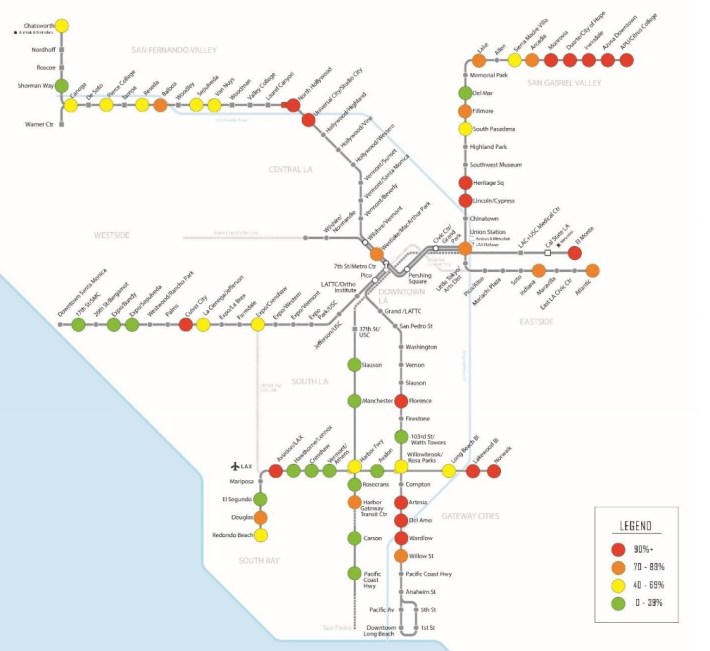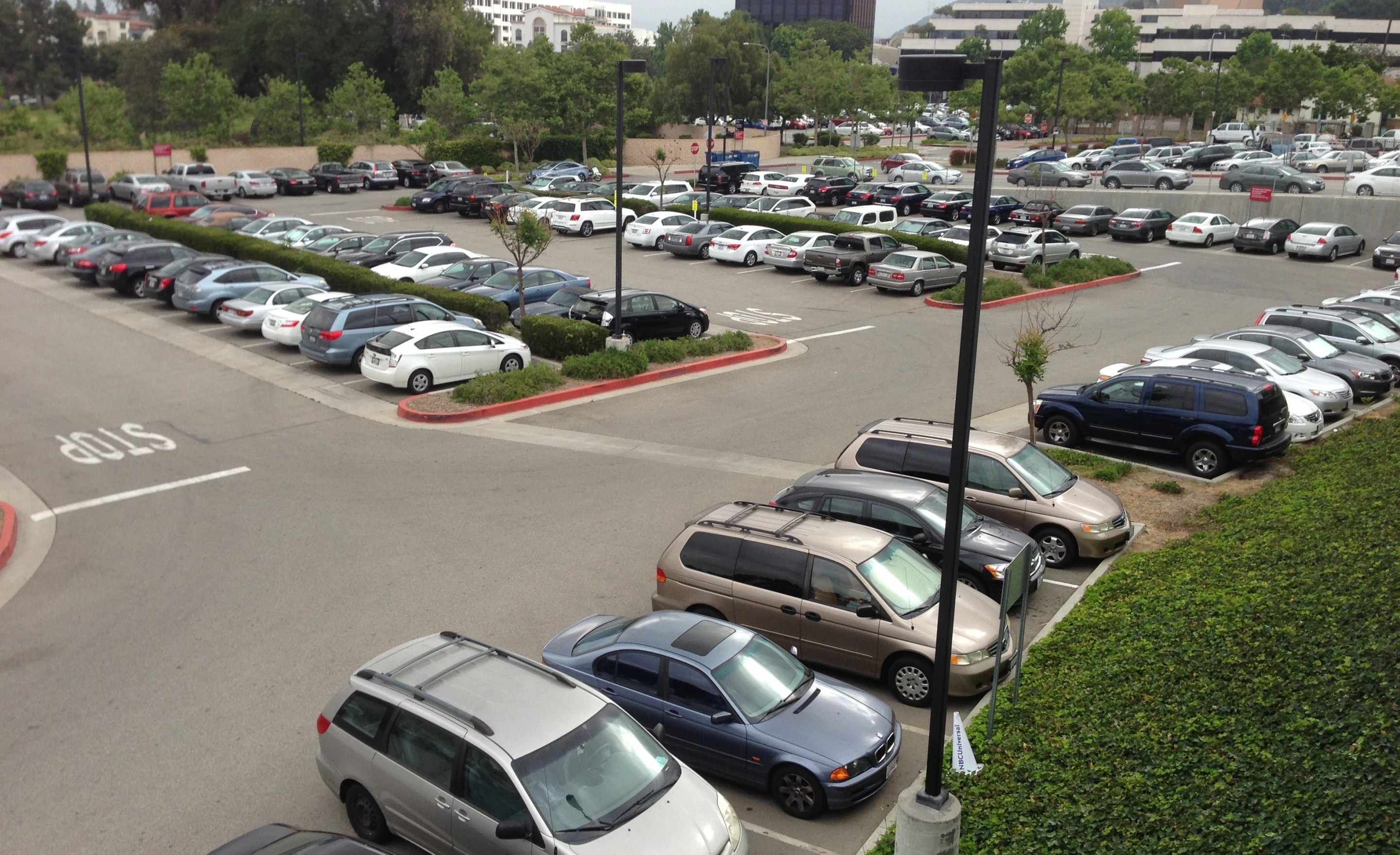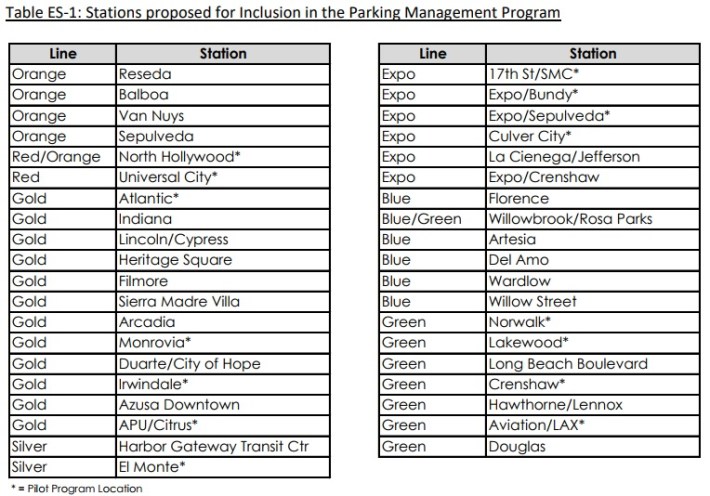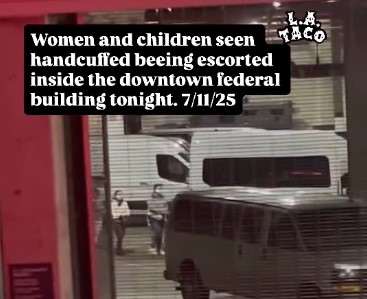Metro is in the process of approving a new master plan that governs how the agency will manage its 24,000 park-and-ride spaces. The plan, officially called the Supportive Transit Parking Program Master Plan or SMPP, builds on a successful pilot program that validates that people who park actually ride the Metro system, and charges for parking at stations where space is more than 90 percent full. These practices are already very successful in Metro's paid parking pilot, which got underway in mid-2016. Approving the SMPP would make the pilot permanent, and expand it to more stations where parking is in high demand.
Up front, it is important to keep a few facts in mind. "Free parking" may be free to drivers, but building, securing, and maintaining parking is a significant agency (hence taxpayer) expense. Also, Metro parking is actually used by relatively few and mostly better-off riders. The overwhelming majority - more than 80 percent - of Metro riders arrive at their stop or station on foot. Fewer than 15 percent of Metro rail riders park and ride. According to Metro's surveys, 41 percent of Metro rail riders are in poverty, but only 1 percent of Metro rail park-and-ride users are. For both equity and the environment, it is much better for Metro to subsidize transit itself, not parking.
The proposed SMPP approval faces a committee hearing next week. It is slated for a vote at the Metro Planning and Programming Committee taking place at 2 p.m. on Wednesday January 17.
In an appendix, the SMPP demand forecasting model suggests that the soon-to-be under-construction Foothill Gold Line extension 2B needs less parking than is currently planned. The San Gabriel Valley cities of Glendora, San Dimas, Pomona, and Claremont are opposing SMPP approval, insisting that Metro provide "free" parking in large parking structures that were studied and approved in 2013. The SGV opposition potentially threatens to derail overall SMPP approval.
What does the actual plan say?
Existing Station Parking
Metro has a large inventory of park-and-ride facilities to manage: 24,000 station parking spaces located in 70 surface lots and 16 parking structures.
When Metro's parking master planning work got underway in 2016, approximately 18,800 spaces (80 percent) of the agency's 24,000 total parking spaces were completely free parking. About 4,200 (17.5 percent) were reserved for paid monthly permit parking.
Among the primary goals of the plan is to make the most out of these existing parking resources:
Focus on managing demand – Due to the high cost of building new parking facilities, focus on managing existing demand. This includes introduction and expansion of permit programs, instituting daily fees for all parking at stations that experience high parking demand and developing permit parking zones to spread demand efficiently across multiple stations.
Focus On the Highest Occupancy Park-and-Ride
The SMPP outlines different approaches for handling facilities experiencing different levels of occupancy. The plan spells out three categories:
- High Parking Demand Stations - park-and-ride 90+ percent full - Metro will charge fees, validate ridership
- Medium Parking Demand Stations - park-and-ride 70-90 percent full - Metro will validate ridership
- Low Parking Demand Stations - park-and-ride less than 70 percent full - Metro will keep parking free, and may "make spaces available to serve the adjacent community."

Under these criteria, the SMPP calls for implementing parking management measures at 39 of the 59 Metro station park-and-ride facilities. Eleven of these already have paid parking in place as part of the current pilot.
Managing Demand: Validating that Folks Who Park Ride Metro
Monthly permit parking remains available at 22 stations. In 2016, Metro began validating these permits to ensure that permit parkers were actually riding Metro. This is done by tying the permit to a TAP card that is used a minimum of ten times per month. Validation shifted 500 Metro parking spaces from non-riders (called "poachers") to riders, and eliminated longstanding wait lists for monthly permits.
The SMPP stresses the need for validation: "Transit rider verification is essential to protecting Metro’s parking supply for its intended users" and further states that "the scale of this non-transit rider parking at some locations, notably North Hollywood and Universal, exceeded initial projections."
Managing Demand: Charging for Parking
Also beginning in 2016, the agency started the new paid parking pilot system, now in place at 11 stations: 17th Street, Expo/Bundy, Expo/Sepulveda, La Cienega-Jefferson, North Hollywood, Universal, APU Citrus, Irwindale, Monrovia, El Monte, and Atlantic. Metro is scheduled to expand the pilot to four additional stations this year: Norwalk, Lakewood, Aviation, and Crenshaw.
Metro's current pilot paid parking program is very customer-focused, with a goal of ensuring an easy, fast, convenient experience for people who park. With this in mind, the system was designed to avoid lines at kiosks and vehicle gate-arms. Instead the gateless, ticketless system relies on license plate readers.
Managing Demand: Additional Measures, and Addressing Spillover
If, after rider validation and charging are implemented, the park-and-ride facility continues to be full, then the SMPP mandates Metro "identify resources to increase the parking inventory through shared use and other non-capital improvements."
In all management scenarios, Metro plans to proactively work with local jurisdictions to manage spillover into adjacent areas. Though Metro does not have direct jurisdiction over adjacent streets, Metro's parking team can inform Metro riders about local parking restrictions, such as 4-hour limits.
Repurposing Unused Parking
For parking facilities with low demand (and for in-demand facilities at off-peak low demand times), the SMPP recommends the agency "explore other uses... such as farmers markets and cultural events... [and] selling parking to non-transit users." Parking facilities with less than ten percent occupancy "should be reviewed to determine whether there is a higher and better use for the facility."
Metro has three early trial versions repurposing unused park-and-ride parking. At the Monrovia Gold Line station, non-riders can pay to park during evenings and weekends. At the Atlantic Gold Line station, non-riders can pay to park for three hours; this serves nearby clinics. At the Sepulveda Expo Line station, Metro is temporarily renting unused parking spaces to construction workers for a nearby development.
Enforcement, Maintenance, Upgrades
The SMPP analysis found that "parking citation issuance at Metro parking facilities is significantly lower than at other comparable transit agencies." For the year studied, Metro issued approximately 5,000 citations which is "90 percent fewer citations per space per year compared to two other sizable transit agencies." The report suggests Metro up its parking enforcement, so that parking scofflaws do not "hinder or prevent parking access to transit for Metro’s ridership."
Further, the plan calls for monitoring and maintaining Metro park-and-ride facilities. Where justified, facilities may be upgraded to enhance customer experience, safety, and/or capacity, with measures such as re-striping, seismic upgrades, lighting, etc.








